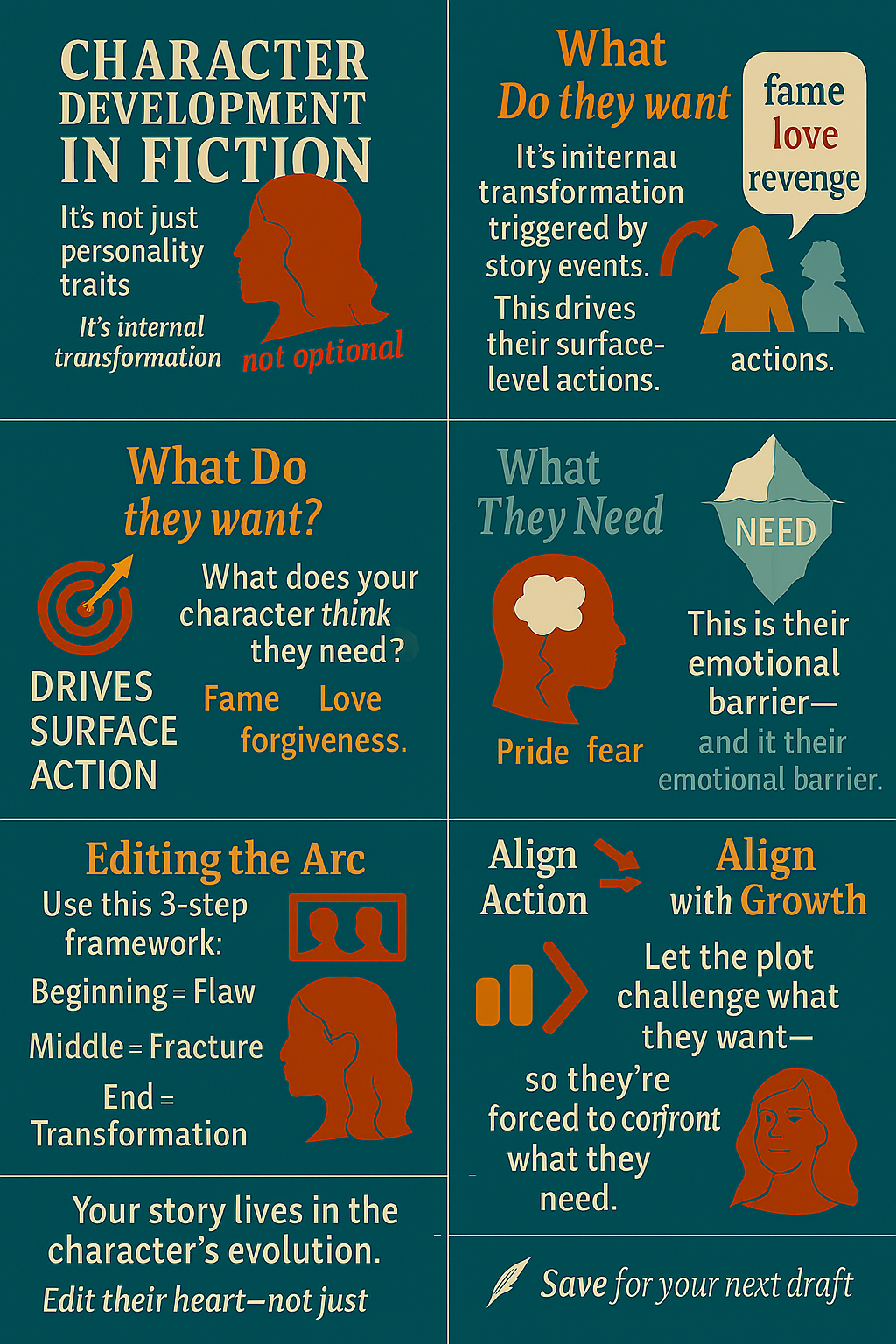Stories are usually liked for either being plot-driven, urging us on to read what will happen next, or they are character-driven, where we deeply empathise with the main character(s). But I’d claim that without a believable/strong character, whether we like them or despise them, there is no real story. So, how do I develop one of those memorable characters?
How often have you heard someone ask whether your characters “write themselves”? Some writers seem to summon their cast in full form—quirks, desires, trauma and all—from the first scene. Others treat characters like puzzles to be slowly assembled: one piece for backstory, one for motivation, and one for contradiction. Neither approach is wrong, but I’d argue, much like plot, character development isn’t optional—it simply happens at different stages in the process.
I’m someone who writes to discover. I might have a vague notion of who this person is (a traumatised woman, an anxious child), but their deeper drives don’t come to me until I’ve seen them in action. I learn about them by watching them fail and make choices.
So what exactly is character development? It’s not just about giving someone a tragic past or making them utter sarcastic comments. Character development is the emotional and psychological evolution of your characters across the story. It’s how their internal landscape shifts in response to external pressure. If plot is about what happens, character development is about how those events matter. In that sense, plot and character development are closely linked.
We often talk about “static” versus “dynamic” characters. A static character stays essentially the same—useful in satire or archetypal roles. A dynamic character, on the other hand, learns, adapts, cracks open. They might begin jaded and leave hopeful. Or vice versa. What makes a character dynamic is not whether they change for the better, but whether they change at all.
There’s also internal vs external development. Sometimes a character’s arc is tied to their role in society (external): the apprentice becomes the master, the captive becomes the leader. Other times, it's entirely internal: they overcome self-doubt, face their shame, find forgiveness. The most successful books manage to link both.
Character development is driven by moral dilemmas, secrets, failure. My personal favourite: contradiction. A character who’s brave in public but riddled with self-loathing in private? That’s gold.
Here’s one framing I use, a sort of mirror to the 3-act plot structure:
Beginning (flaw) – Who are they at the start, and what limits them?
Middle (fracture) – What breaks their worldview and demands change?
End (transformation) – Who have they become? Not necessarily better but different.
And just like with plot, some writers know this arc before they write a single scene, others discover it by accident, in the mess of first drafts. It doesn’t really matter how you get there, so long as your characters earn their transformation.
Whether you're writing heroes who fall or villains who redeem, the goal is always the same: to make your characters feel real enough that we care when they rise—and ache when they don’t.
Some useful resources:
Molly McCowan: Effective editing
James Hynes: Writing Great Fiction
E. M. Forster: Aspects of the Novel










